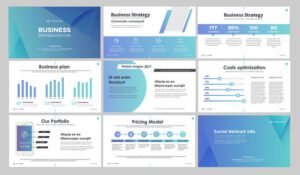What is Business Process Management?
Business Process Management (BPM) is a way of making sure that all the different parts of a business work together smoothly. It involves understanding how the business works, finding ways to improve it, and making sure that everyone is doing their job properly.
In the intricate dance of modern business, the key to success lies not only in what you offer but how you offer it. It’s a realm where efficiency, agility, and the ability to adapt swiftly to changing landscapes reign supreme. This is where Business Process Management (BPM) steps into the spotlight, emerging as a potent force reshaping the way organizations operate, innovate, and stay competitive.
At its essence, BPM is the strategic approach of optimizing and governing an organization’s processes to achieve defined business goals. It’s a philosophy that transcends mere workflow charts and procedural manuals. It’s a holistic strategy that encompasses everything from process analysis and design to execution, monitoring, and continuous improvement. In an era marked by relentless technological advancement and data-driven decision-making, BPM is the compass guiding businesses toward operational excellence. So, let’s embark on a journey to uncover the intricacies of BPM, explore its critical components, and understand how it’s driving businesses to not just survive but thrive in the digital age.
Here are the key steps in BPM:
- Process mapping: This is where you figure out how the business works by drawing a diagram of all the different steps involved in each process.
- Process analysis: This is where you look at the process map and try to find ways to improve it. You might be able to make the process faster, cheaper, or more efficient.
- Process design: This is where you create a new process that is better than the old one.
- Process governance: This is where you make sure that the new process is being followed correctly.
- Process monitoring: This is where you track the performance of the new process to make sure that it is working as expected.
- Process performance: This is where you measure the results of the new process to see if it is achieving the desired outcomes.
Continuous improvement is an important part of BPM. This means that you are always looking for ways to make the process even better. You can do this by collecting feedback from employees, customers, and other stakeholders. You can also use data to track the performance of the process and identify areas for improvement.
Continuous improvement is the heartbeat of effective Business Process Management (BPM). It’s the principle that fuels the engine of progress within organizations, propelling them toward higher efficiency and better outcomes. In the context of BPM, continuous improvement isn’t a sporadic or ad hoc activity; rather, it’s a systematic approach to refining processes, enhancing performance, and adapting to an ever-evolving business landscape.
At its core, continuous improvement within BPM is about fostering a culture of innovation and evolution. It involves a cycle of assessment, analysis, optimization, and monitoring. BPM teams and stakeholders regularly evaluate processes to identify bottlenecks, redundancies, and areas ripe for enhancement. This scrutiny is followed by strategic adjustments and refinements aimed at streamlining workflows and bolstering productivity. Through this iterative process, businesses can achieve a state of operational excellence, where processes are not static but dynamic entities that evolve in sync with organizational goals and market demands. Continuous improvement, as driven by BPM, is the cornerstone of adaptability and competitiveness in today’s fast-paced business landscape.
Steve Jobs eloquently encapsulates the significance of continuous importance in companies in this video
BPM can help businesses to:
- Improve efficiency
- Reduce costs
- Improve customer satisfaction
- Increase employee morale
- Reduce risk
- Gain a competitive advantage
If you are looking to improve your business, Business Process management (BPM )is a great place to start. It is a systematic approach to improving business processes that can help you to achieve your goals.
Best Practices:
- To be good at Business Process management (BPM), you need to follow rules that have been shown to work.
- One of these rules is to have a team of people from different parts of the business work on Business Process management (BPM) together.
- Another rule is to talk to your employees about BPM and ask for their ideas.
- You can also use Business Process management (BPM)software to help you manage your processes.
- Make sure that Business Process management (BPM)is part of your company’s overall goals.
Tools of the Trade:
- There are special software programs that can help you with BPM.
- These programs can make it easier to manage, automate, track, and analyze your processes.
- Some popular BPM software programs include Appian, IBM BPM, and Microsoft Power Automate.
Certification Matters:
- Getting a BPM certification can show that you know a lot about BPM.
- This can help you get a job or promotion.
- There are BPM certifications from organizations like BPMInstitute.org and ABPMP.
Automation in Action:
- Automating your business processes can make them faster and more accurate.
- This can free up your employees to do other things.
- Companies like Netflix have used automation to improve their services.
Reengineering for Success:
- Sometimes, you need to make big changes to your business processes.
- Business Process Reengineering (BPR) is a way to do this.
- BPR involves finding outdated processes and changing them to meet the needs of your business today.
- This can lead to big improvements in your business.
Key Performance Indicators (KPIs)
- You need to measure things in order to improve them.
- Decide which things are important to measure for your business processes.
- These measurements will help you stay on track as you improve your processes.
- Some common measurements include how long it takes to complete a process, how much it costs, how happy customers are, and how well you follow the rules.
- Track these measurements regularly to see if your improvements are working.
Challenges Along the Way
- Changing the way people do things can be difficult.
- You need to help people understand why the change is important and how it will benefit them.
- You also need to protect sensitive data.
- It can be hard to choose the right BPM software.
Emerging Trends
- Artificial intelligence (AI) is making it easier to automate tasks.
- Blockchain technology makes processes more secure.
- Businesses are focusing on making customers happy.
Business process management tools:
Business management tools are essential for enhancing productivity, streamlining operations, and achieving success. Here’s a list of important business management tools that cover various aspects of business operations:
Project Management:
- Trello: A visual project management tool that uses cards and boards to organize tasks and projects.
- Asana: Helps teams plan, organize, and manage their work, with features for task assignment, tracking, and collaboration.
- Monday.com: A work operating system that powers teams to run projects and workflows with confidence.
Customer Relationship Management (CRM):
- Salesforce: A comprehensive CRM platform that helps businesses manage sales, customer service, marketing, and more.
- HubSpot CRM: A user-friendly CRM that automates tasks, tracks interactions, and helps businesses grow.
- Zoho CRM: Provides tools for managing sales, marketing, customer support, and inventory.
Communication and Collaboration:
- Slack: A messaging platform for teams that facilitates communication and collaboration in real-time.
- Microsoft Teams: Part of Microsoft 365, Teams offers chat, video conferencing, and file sharing capabilities.
- Zoom: A popular video conferencing platform for virtual meetings and webinars.
Task and Time Management:
- Todoist: A task management app that helps you organize and prioritize tasks.
- Clockify: Time tracking software that assists in tracking work hours for projects and tasks.
- Toggl: A time tracking tool that offers insights into time spent on different activities.
Finance and Accounting:
- QuickBooks: An accounting software for small businesses that manages invoices, expenses, and financial reports.
- Xero: Cloud-based accounting software with features for invoicing, payroll, and expense tracking.
- FreshBooks: A cloud accounting solution designed for small businesses, offering invoicing and expense tracking.
Human Resources and Team Management:
- BambooHR: An HR software for managing employee records, payroll, and recruitment.
- Gusto: A platform that simplifies payroll, benefits, and HR for small businesses.
- TSheets: A time tracking and employee scheduling software.
Marketing and Analytics:
- Google Analytics: A web analytics service that provides insights into website traffic and user behavior.
- Mailchimp: A marketing automation platform for email marketing and audience engagement.
- Hootsuite: A social media management tool for scheduling posts and analyzing performance.
Document and File Management:
- Google Workspace (formerly G Suite): Offers cloud-based collaboration tools like Gmail, Google Drive, and Google Docs.
- Dropbox: A file hosting service that allows secure file sharing and storage in the cloud.
- Microsoft OneDrive: Part of Microsoft 365, it provides cloud storage and file sharing.
E-commerce and Sales:
- Shopify: An e-commerce platform that helps businesses set up online stores and sell products.
- WooCommerce: A plugin for WordPress that enables e-commerce capabilities on websites.
- Stripe: An online payment processing platform for accepting payments on websites and apps.
Customer Support and Helpdesk:
- Zendesk: A customer support and helpdesk platform that offers ticketing, self-service, and live chat.
- Freshdesk: A customer support software with multichannel capabilities and automation.
These business management tools can significantly improve efficiency, collaboration, and overall business performance. The choice of tools depends on the specific needs and size of your business.
Also I would I like to special mention about an advanced tool called Celonis. Celonis is a specialized business process management (BPM) tool that focuses on process mining and process optimization. It doesn’t fit directly into the categories of the previously mentioned tools, but it plays a crucial role in enhancing business processes. Here’s where Celonis fits in the list of recommended tools:
Celonis: Celonis is a leader in the field of process mining and optimization. It helps organizations analyze and visualize their existing business processes, uncover bottlenecks and inefficiencies, and then optimize these processes for better performance and efficiency. Celonis provides insights into how processes are actually executed by analyzing event logs from various systems and applications. It can be considered a specialized tool for business process analysis, governance, and continuous improvement.
Celonis doesn’t replace the general project management, CRM, or communication tools mentioned earlier. Instead, it complements them by offering a deeper understanding of your existing processes, which can then inform improvements and optimizations. It’s particularly valuable for organizations looking to streamline and optimize complex operational workflows.
So, if your business is focused on process improvement and you want to take a data-driven approach to optimize your operations, Celonis can be a valuable addition to your t
Conclusion:
Business Process Management (BPM) isn’t merely a management philosophy; it’s the very backbone of efficient, agile, and competitive organizations in today’s dynamic business environment. As we’ve explored the key elements of BPM, from process mapping and analysis to governance, monitoring, and continuous improvement, it becomes evident that this holistic approach is the compass guiding businesses toward operational excellence. It’s not a static destination but a continuous journey of refinement and adaptation.
Moreover, BPM aligns perfectly with the prevailing trends in the business world – automation, data-driven decision-making, and customer-centricity. It empowers organizations to harness the full potential of their processes, leverage technology for streamlined operations, and ultimately deliver exceptional value to customers. As businesses face ever-evolving challenges and opportunities, embracing BPM as a core strategy will be pivotal in not just surviving but thriving in the digital age. So, remember, in the realm of modern business, BPM isn’t an option; it’s a necessity, and it’s the driving force behind sustainable success.
Our comprehensive journey through the realm of Business Process Management has unveiled the depth and breadth of this discipline. From mapping the uncharted territories of your business processes to embracing automation and adapting to emerging trends, BPM is a dynamic journey towards excellence. Remember, BPM is not a destination but a continuous quest for improvement. Equip yourself with the right tools, certifications, and a forward-looking mindset, and let the BPM journey lead your business to new heights. Happy managing!
For more insights on Mastering Leadership skills, explore our article on the Top 10 Must have Leadership Skills.




